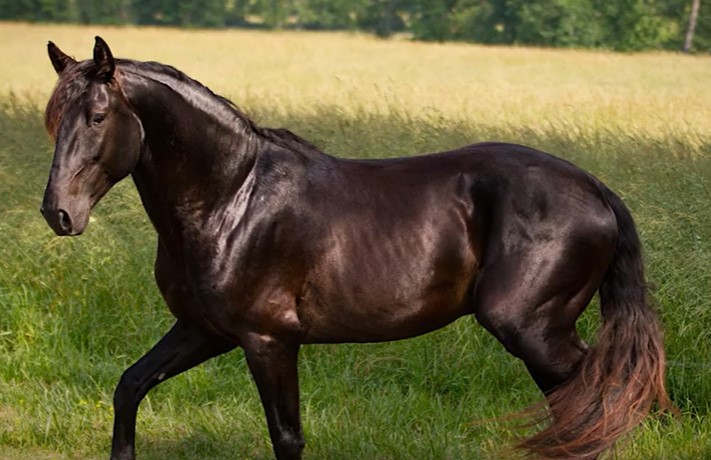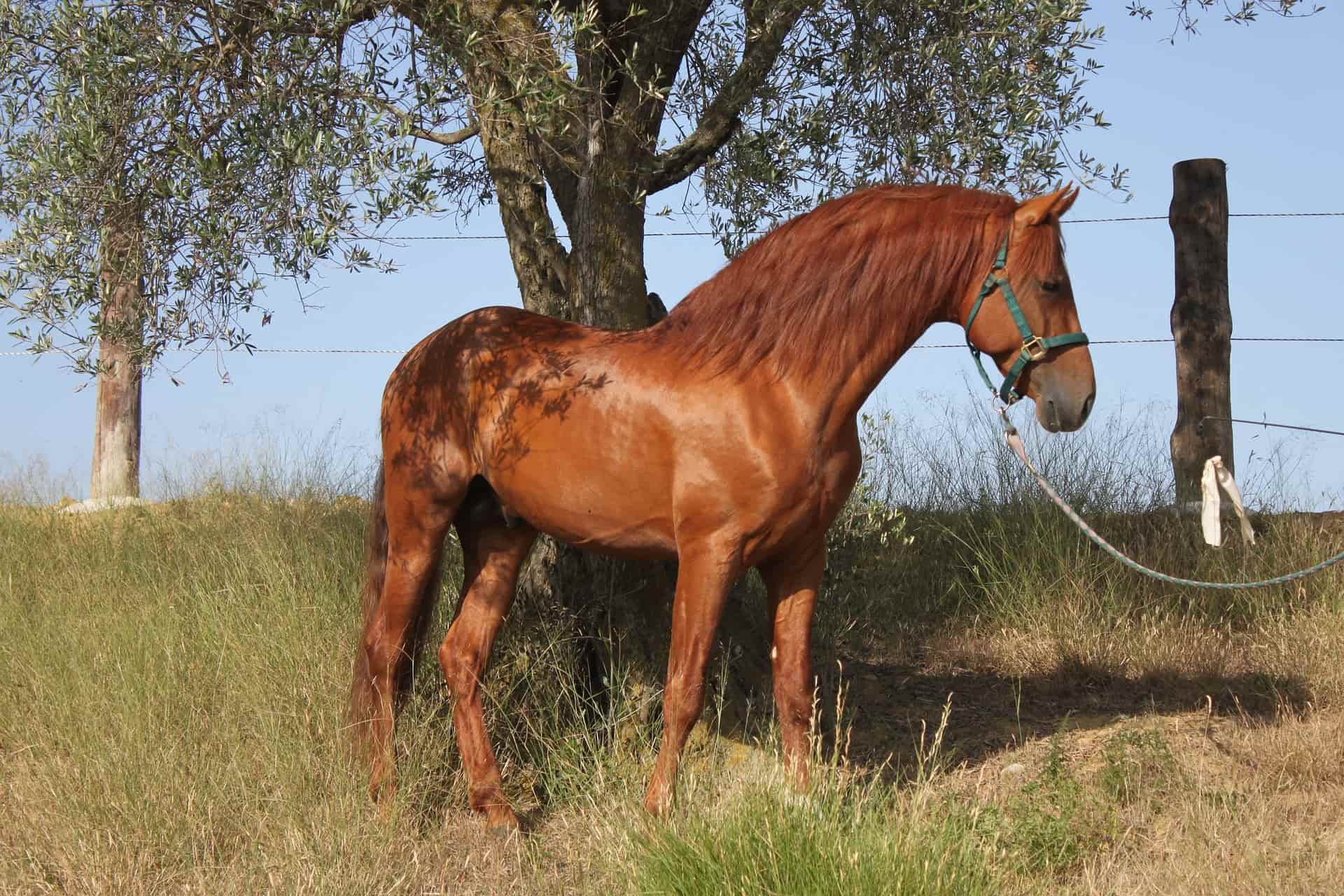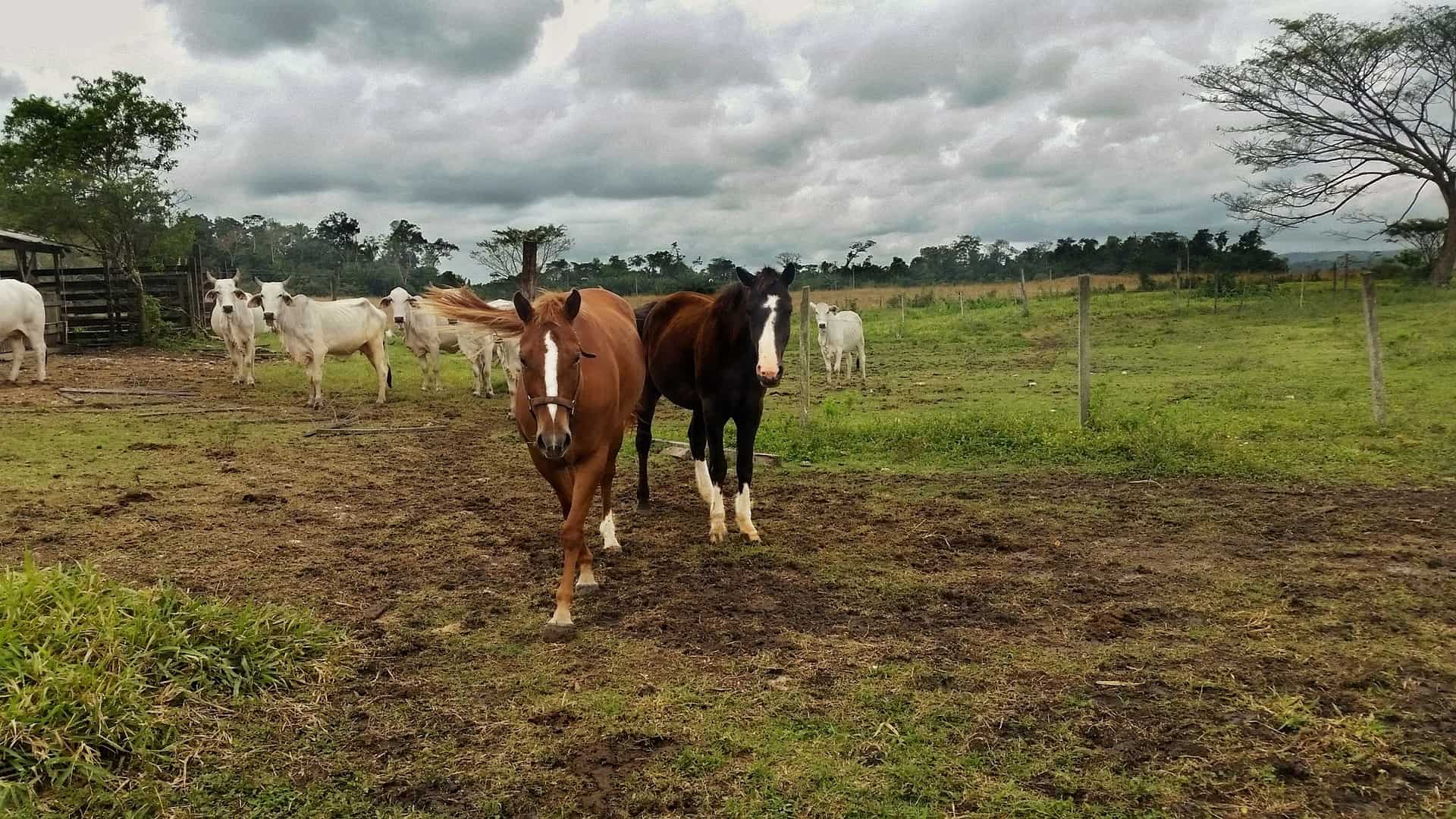The elegant Lusitano horse hails from Portugal but is slowly but surely gaining steam as a noteworthy steed on American soil. Today, there are about 60,000 registered Lusitano horses across the globe, with about 16,000 of them located in the United States.
Burly, intelligent, noble, and friendly, the Lusitano horse shines in various disciplines of sport and in humble homestead performance. Aching to learn more about this majestic breed? Here’s everything you need to know about the Lusitano horse.
The History and Evolution of the Lusitano Horse

Most popular in Portugal, the name Lusitano actually comes from Lusitania – an ancient Roman name for a Roman province situated where modern Portugal and Spain are located today. Known in those days as Iberia, this region has had a long and colorful history with their Iberian horses which included the ancestors for both the Lusitano and the Andalusian horses.
800BC
Settlers in the Iberian peninsula – who were originally from North Africa – became known for their original Iberian horse – powerful, majestic creatures that were used in warfare and travel. Called the ‘Sons of the Wind’, the Iberian horse was said to form a powerful bond with its rider, and even inspired stories about centaurs.
711BC
Muslims entered Iberia with their Arabian horses. These exotic horses were bred with the local Iberian horse, allowing a more slender appearance and greater agility with their powerful hindquarters.
200BC
Centuries later in 200BC, the Romans conquered parts of Iberia during the great Roman crusades and were quickly captivated by their noble Iberian war horse that performed well in battle. They swiftly put up stud farms where the local Iberian horse breed (like the Sorraia horse) was proliferated and trained for medieval wars.
During this time, the Iberian war horses were mixed with the Camargue horse. Interestingly, these ancient Roman horses were born with dark coats which would fade to gray over the years. This distinct gray coat color is the most common color for Lusitano horses today, and is attributed to the ancient Romans breeding horses.
8th Century AD
Fast forward after the Roman times to the 8th century AD, and Moorish invaders conquered parts of Iberia, bringing with them their Barb horses. These inevitably intermingled with the native Iberian horse. Together, the two breeds enhanced each others’ qualities, intensifying beauty, agility, strength, form, and speed.
Throughout the years, these Iberian breeds spread throughout Spain and Portugal, branching out into many distinct breeds largely separated by unique genetics despite often sharing a maternal lineage. These genetic studies identified similar horse breeds like the Andalusian horses, the Menorquin, and of course, the modern day Lusitano horse breed (also called the Puro Sangue Lusitano) we know and love today.
Related Read: 20 Horse Breeds Originating from Spain
In Modern Times
After the branching out of the Iberian horses to different horse breeds, the Lusitano horses became much more distinct. Although similar to the Andalusian horses, the Lusitano horses were not bred for high skips. Thus compared to the Andalusian horses, Lusitanos had much beefier bodies and musculature.
In the mid 18th century, a specific type of the Lusitano was bred solely in Portugal’s Alter Real State Stud. These Puro Sangue Lusitano mares and studs were mixed and developed specifically for royal use and for the national riding academy.
Years later however, the Lusitano horses became common sight throughout Portugal and Spain, carrying with it the original qualities of Iberian horses, but still demonstrating the unique capabilities and temperament of the Portuguese horse.
Features, Characteristics, and Temperament
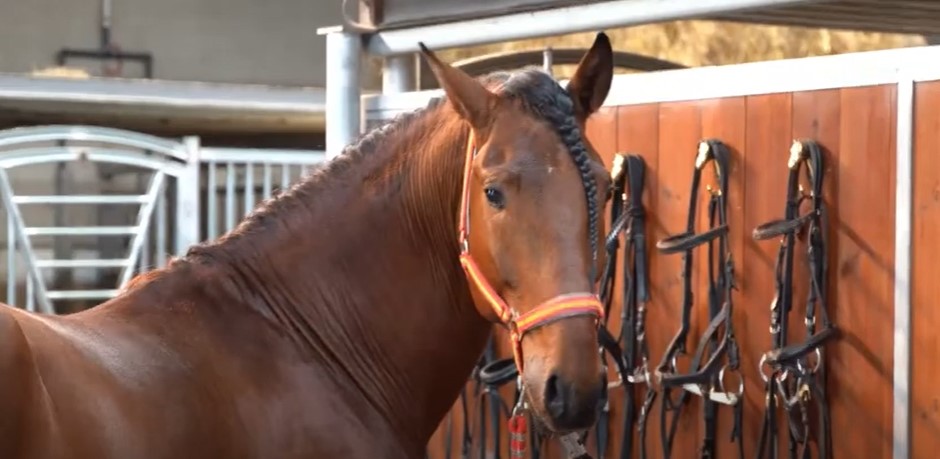
As one of the many horse breeds classified as baroque, the Pure Blood Lusitano horse breed registry describes the breed as having almond shaped eyes, a muscular body, powerful legs, a majestic, noble presence, and elegant form.
With a broad chest, an arched neck, a well proportioned head, and sloping shoulders, the horses can support significantly heavy loads with their short backs and their elevated movement.
Their compact, muscular structure makes the Lusitano a wonderful horse breed for classical dressage and advanced dressage tournaments. But more than just that, these horses possess a natural ability in various equine disciplines beyond dressage including show riding, jumping, carriage driving, and western riding.
In fact, the Lusitano is still used in mounted bullfighting today because of its powerful stance and unwavering courage. But even then, many riders face stigma and shaming when these horses are placed in such precarious situations that risk serious injury and even death.
Most modern day Lusitanos that make appearances in competition take home medals. In 2002, a Lusitano won a bronze medal for dressage at the World Equestrian Games, while another Lusitano bagged the silver medal in the 2004 Summer Olympics.
Lusitano Horse Qualities
- Average height: 15.2 to 15.3 hands
- Average weight: 1100lbs
- Life expectancy: 30 years
- Coat colors: All basic colors, most commonly brown and white, beautiful as a black horse
- Prevalence: Portugal, Spain, South America, United States, Great Britain
- Personality: Calm, friendly, intelligent, stoic
Temperament and Personality
If you ever have the privilege of coming face to face with a Lusitano, it’s proud, calm, collected demeanor might be the first thing you notice. These behemoth horses will hardly ever flinch – even in the face of a raging bull during mounted bullfighting. The powerful descendant of the Iberian horses ooze with an air of regal presence, and handle themselves with unwavering grace and elegance.
But despite being quiet and reserved, the Lusitano horse can be particularly friendly which is a common quality of the Portuguese horse breed. Once bonded with its human, the horse becomes a fiercely loyal companion which demonstrates how and why these horses and their companions originated the idea of centaurs.
The affectionate companion also demonstrates a particularly strong intuition. Its intelligent mind can pick up on its owner’s cues, allowing the horse to adjust accordingly to accommodate its human’s needs.
So even if the Lusitano possesses qualities that make it a strong choice for advanced equine events and sports, it surprisingly makes a suitable beginner horse as well.
How to Care for Lusitano Horse Breed

The care required for a Lusitano horse doesn’t vary too much from the standard care that other horse breeds might call for. Nevertheless, if you’re planning to buy a Lusitano horse, it’s important that you’re fully aware of the effort you need to put in to keep it healthy and happy.
Living Space
The Lusitano is a pretty sizeable horse, so you will have to take its space requirements into consideration if you’re planning to buy a new horse. According to experts, a 12 x 12 foot tall is the standard stall size for horses that weigh 1,000 lbs. As for outdoor space, adult Lusitano horses require at least 400 square feet of open area to roam and forage.
Grooming
To maintain the majestic, regal appearance of your Lusitano horse, you will have to spend quite a bit on grooming. Lustiano horses need their hooves groomed every 6 to 8 weeks. This entails a trim and shoeing which may cost close to $1,500 a year.
Aside from grooming its hooves, you will have to consider a bathing schedule. Giving your Lusitano horse a bath every two months can help get rid of dirt and stains on its coat and cool it down in the hotter months. It’s not recommended however that you bathe your Lusitano more than once every month.
Constant brushing in place of bathing can help maintain a shiny healthy coat, and should get rid of dirt and pests that find their way into your Lusitano horses fur and hair.
Dietary Requirements
There isn’t much that sets the Lusitano diet apart from the standard diet of other horses like the Andalusian. Back in the Iberian peninsula, the ancient Iberian horses would forage on dry grass and hay, which has allowed the breed to adapt to a very low protein diet.
Because they are natural grazers, a Lusitano won’t cost you much in terms of dietary requirements and food expenses because they don’t really need too many fancy supplements and feed. Roughage like grass and hay may be sufficient to keep your horse healthy for its lifespan.
Keep in mind though that not all horses are the same. If your horse has unique dietary needs because of a condition or disease, then it’s important to visit your vet and ask for an appropriate diet for your animal.
Veterinary Visits
The horse in general is the kind of animal that will require frequent, routine veterinary visits to guarantee and safeguard its health. Yearly deworming, dental care, and vaccinations are necessary if you want to keep your Lusitano horses in proper condition and if you want to prevent the spread of disease and infection if you have a ranch of several horses.
Vet visits can easily cost upwards of $1,000 per horse. However injuries, infections, diseases, and other illnesses can significantly increase the cost of veterinary care. For that reason, proper health maintenance becomes a vital part of preventive medicine. It’s also important that you carefully inspect and maintain your horse’s surroundings to prevent accidents and contamination.
How Much Does the Lusitano Horse Cost?
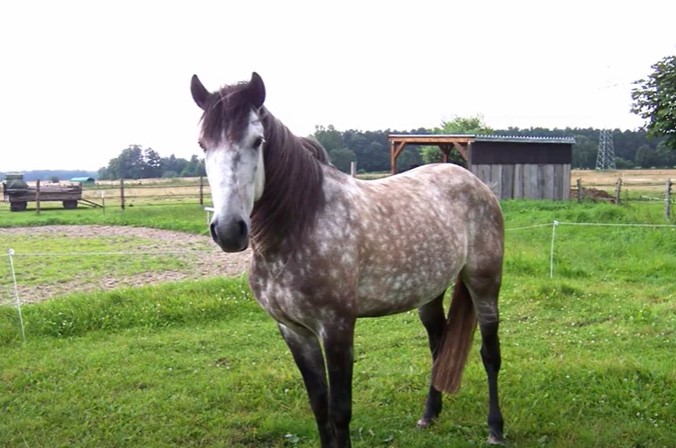
Estimates for the cost of a Lusitano horse vary greatly. That’s because multiple factors come into play when assessing a horse and its appropriate price tag. Depending on these factors, the cost of the horse in question may fall within a broad range.
- Pedigree
- Age
- Training
- Show experience
- Athletic capability and/or potential
- Lineage and bloodlines
- Health
- Coat color
Another thing worth considering is the sheer rarity of the descendants of the Iberian horses. Usually, the more rare = more expensive breeds. With just about 60,000 registered Lusitano horses the world over (and just 16,000 on US soil), these horses have become a relative rarity versus more common choices like the Quarter horse or the American Paint horse.
All things considered, you might be looking at a price as much as $30,000 for just one Lusitano horse. Younger specimens with less training and a mediocre pedigree may slash that price by up to 70%, resulting in a cheaper horse.
To find a certified Lusitano horse, you may have to visit breeding centers. These breeding centers work to guarantee the purity of the breed without compromising the health of the individuals and the resulting offspring.
Naturally, breeding centers tend to sell their horses at a slightly steeper cost because of the care that goes into breeding. Nevertheless, it’s always worth checking them out because of the uncertainty surrounding DIY breeding ranches.
Frequently Asked Questions
What is the lifespan of a Lusitano horse?
Interestingly, Lusitanos tend to outlive a lot of other breeds. Although their lifespan isn’t beyond the average lifespan range for horses, its 30-year lifespan maxes out the expected lifespan for a horse in general. So while other breeds might kick the bucket at age 25, Lusitanos have a better chance of living up to the maximum 30.
Are Lusitano horses gaited?
A naturally gaited horse is a type of horse that ambles with just one leg at a time. This individual gait pattern allows the horse to adapt a more energy-saving motion that extends its endurance and stamina. This distinct walking pattern also ensures a smoother ride for the human on its back, reducing pressure on the joints.
That said, the Lusitano horse is not a gaited horse breed. Nevertheless, it’s agile and elevated stride make for a particularly smooth and comfortable ride, allowing the rider to enjoy long trail rides without added pressure and discomfort on the hips and back. So it still makes for decent trail riding breed despite not being naturally gaited.
What are Lusitano horses best used for?
Because they’re highly intelligent, the Lusitano horse breed performs best in classical dressage and advanced dressage. Its muscular body and naturally powerful, commanding form make it the perfect choice for the training discipline that requires particular precision, grace, and agility.
But dressage isn’t all the Lusitano breed is good at. Lusitano horses have taken home many a gold medal in show riding, jumping, carriage driving, and western riding, you might call the horse an all around performer.
In fact, the decorated breed made a powerful appearance in the 2006 World Equestrian Games when the entire Portuguese dressage team brought only Lusitano horses to their dressage competitions. Taking home the gold medal in four in hand driving, the Belgian Brasseur took the top spot with a team composed solely of Lusitano horses.
However if you don’t intend to use your horse for competition, the Lusitano breed might find purpose under your care yet. These agile horses perform particularly well on the ranch. With superior stamina and endurance and calm, collected demeanor, the Lusitano breed has earned a place as a favorite companion for dedicated ranchers.
Are Lusitano horses good for beginners?
Despite being equipped with powerful bodies and supreme intellect, these horses interestingly make a suitable horse for beginners. Their stoic, docile, calm nature means that owners can work with the Lusitano without the struggle of stubbornness and high, frenetic energy bursts.
What’s even better is that as you improve your own capabilities as a horse trainer and owner, your Lusitano gets the chance to demonstrate its physical prowess and intellect. So with the Lusitano, you can be sure you’ve got an animal that will wait for you to grow and improve so you can tap into its more advanced skill set.
A Horse for All Seasons
Powerful, majestic, and incredibly smart, it comes as no surprise that the Portuguese horse captivated people as early as the Roman empire. So if you were looking for a reliable workhorse for your ranch or for a promising winner for tournaments and competition, you can never really go wrong with the name a Lusitano horse.
